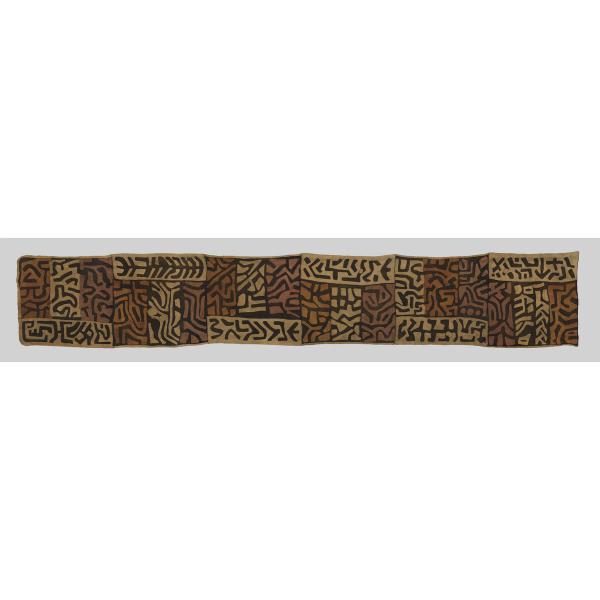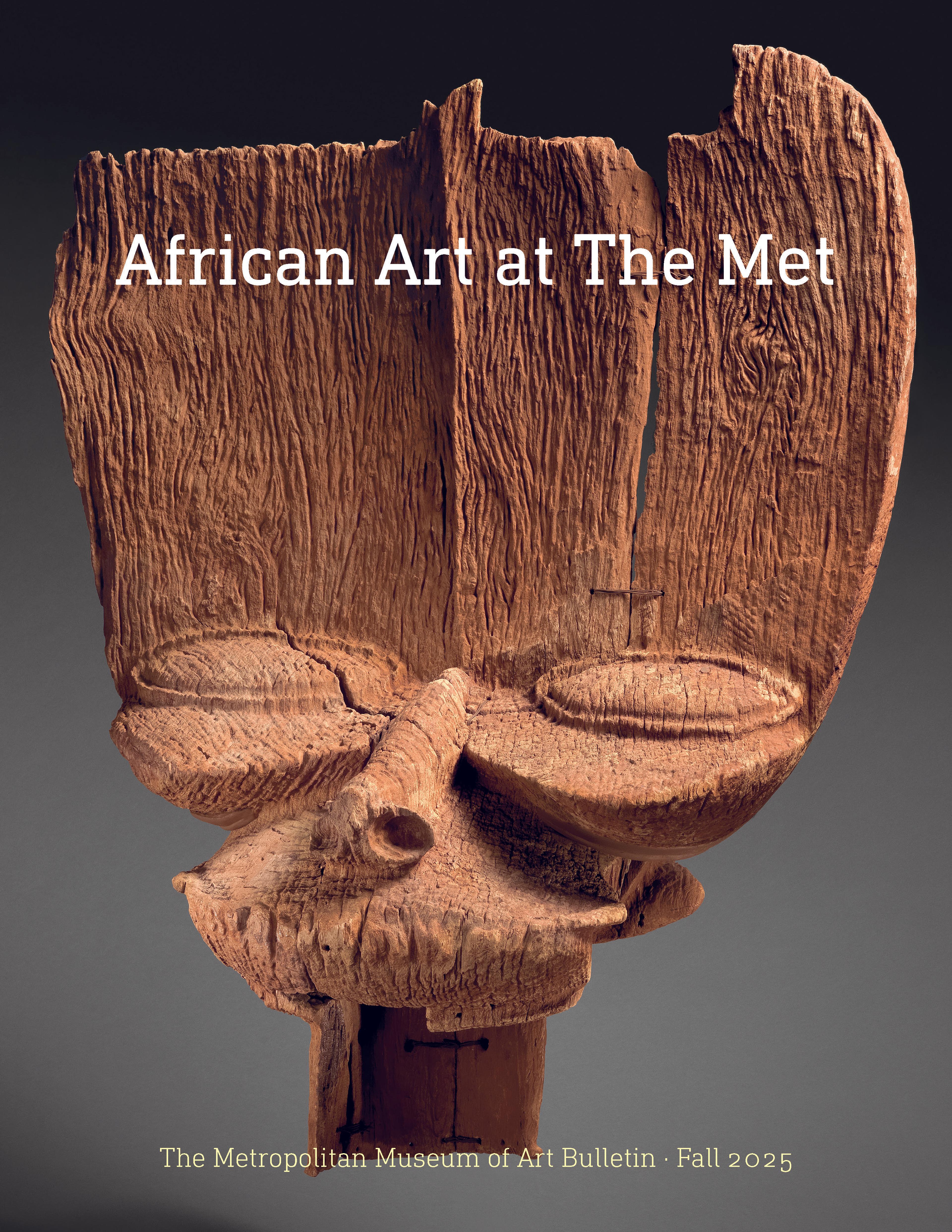Ncák (women's ceremonial skirt)
Artwork Details
- Title: Ncák (women's ceremonial skirt)
- Artist: Kuba artist
- Date: early–mid-20th century
- Geography: Democratic Republic of the Congo, Kasai River region
- Culture: Kuba
- Medium: Raffia palm fiber, dye
- Dimensions: H. 26 x W. 167 in. (66 x 424.2 cm)
- Classification: Textiles-Woven
- Credit Line: Rogers Fund, 2004
- Object Number: 2004.254
- Curatorial Department: The Michael C. Rockefeller Wing
Audio

1548. Women's ceremonial skirts, Kuba artists
Duro Olowu
DURO OLOWU: The material is king here. With these textiles, the artists handed themselves over to a sort of dizzying ecstasy that one gets when materials inform your eye and your hands and then you make something out of that. The colors are so beautiful. Even the singular dark brown or off-white camel, which has now gone darker with age, has probably twenty different hues in it.
ANGELIQUE KIDJO (NARRATOR): Duro Olowu is a Nigerian-born, London-based fashion designer and curator. Here, he reflects on the elite fashions produced from natural fibers in this gallery.
DURO OLOWU: No one wanted to look exactly the same as the other person, which is why the makers are very conscious of difference in the motifs that occur in a way that are not so obvious, but when you really look, they’re there. Little touches of color, positioning of the same motif but upside down and further apart. Little elements that make these clothes feel like the haute couture garments that they are.
ANGELIQUE KIDJO: Here we see examples of monumental skirts composed by groups of aristocratic female designers to be worn wrapped multiple times around the lower body for ceremonial court events.
DURO OLOWU: These are pieces that have presence in their execution, they are so confident and so free. I think it’s also a reflection of the amount of work that went into something that was going to be wrapped in layers. In this case, we are lucky to see them unfurled as it were, because what this unfurling means is that even though the artists knew that it would be wrapped and a lot of it would not be visible, it didn’t take away from the kind of intricacy of work and aesthetic composition that they were willing to put into it. And I think that laying it out in a way that allows us to view it in its entirety also allows the visitor to visit it over and over again and see something different.
###
Audio: Courtesy of Kumakonda African Expeditions.
More Artwork
Research Resources
The Met provides unparalleled resources for research and welcomes an international community of students and scholars. The Met's Open Access API is where creators and researchers can connect to the The Met collection. Open Access data and public domain images are available for unrestricted commercial and noncommercial use without permission or fee.
To request images under copyright and other restrictions, please use this Image Request form.
Feedback
We continue to research and examine historical and cultural context for objects in The Met collection. If you have comments or questions about this object record, please contact us using the form below. The Museum looks forward to receiving your comments.
